| Canterbury Museum ID |
Title |
Description |
Notes |
filename |
| 2007.160.21 |
Brick, wide rectangular frog |
Very heavy red brick with wide rectangular frog with curved edges and angled curved sides. Circa pre 1870. |
|
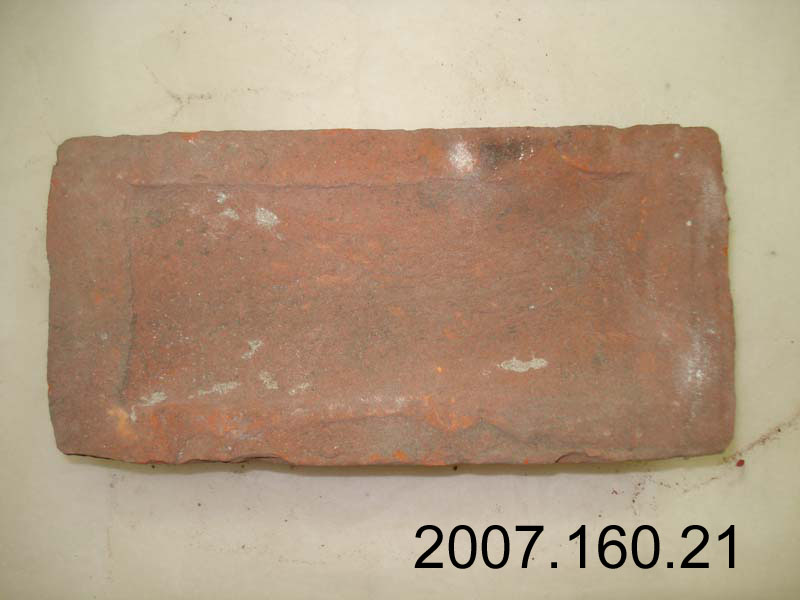
2007_160_21.jpg |
| 2007.160.22 |
Brick, Glenboig |
Glenboig, Quoin, Glasgow Wedge shaped brick used in making archways. Frog is indented letters "Glenboig T16". Mould line visible on wide end. Made by the Glenboig Union Fire clay Company, Scotland which was established in 1836 but was most active 1882 - 1965. This brick dates 1882 - 1900. |
The Glenboig Union Fireclay Co. Ltd was founded by James Dunnachie & partners by the amalgamation of the "Old Works" and the "Star Works" in Glenboig. The company specialised in the production of refractory ceramic goods (e.g. furnace lining bricks and pipework) for the iron and steel industry which was flourishing in the nearby industrial towns. In 1882 the company purchased the Cumbernauld Fire-clay Company for £4000. The share holders were told that Cumbernauld "possesses a clay field practically inexhaustible of unapproachable quality". By 1882 it had been proved that Glenboig bricks were superior to all others in Britain. James Dunnachie was to build on this reputation such that regular orders were received from as far as Russia, Canada, India, Australia, New Zealand and South America as well as over Europe. Medals and awards for Glenboig products were won all over the world. By expansion and take-over the company went on to operate several other works, viz.: Cumbernauld Fireclay Works & Mine (c. 1882); Gartcosh Works (1890); Castlecary Fireclay Co. Ltd (c1919); Faskine & Palacerigg Bricks & Coal Ltd (c1919); George Turnbull & Co. Ltd - Bonnymuir and Dykehead Works (c1919). Palacerigg Mine 1884-1958 called the "Glen Cryan Mine" was first run by Glenboig Union Fireclay Company. |
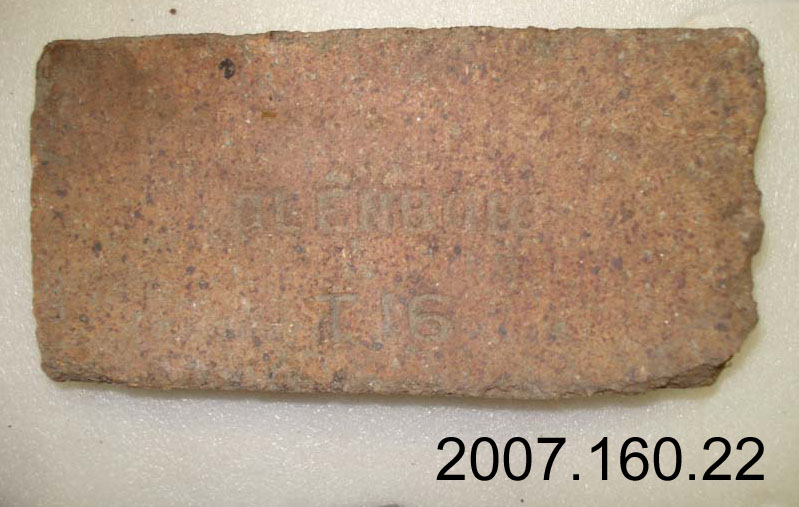
2007_160_22.jpg |
| 2007.160.23 |
Fire brick, Glenboig |
Apricot rough fire brick made by Glenboig, Glasgow with rectangular depression with indented letters "Glenboig". Indentation on top right side appears to be a thumb mark made in the soft clay before firing. Made by the Glenboig Union Fire Clay Company, Scotland which was established in 1836 but was most active 1882 - 1965. This brick dates circa 1885. |
The Glenboig Union Fireclay Co. Ltd was founded by James Dunnachie & partners by the amalgamation of the "Old Works" and the "Star Works" in Glenboig. The company specialised in the production of refractory ceramic goods (e.g. furnace lining bricks and pipework) for the iron and steel industry which was flourishing in the nearby industrial towns. In 1882 the company purchased the Cumbernauld Fire-clay Company for £4000. The share holders were told that Cumbernauld "possesses a clay field practically inexhaustible of unapproachable quality". By 1882 it had been proved that Glenboig bricks were superior to all others in Britain. James Dunnachie was to build on this reputation such that regular orders were received from as far as Russia, Canada, India, Australia, New Zealand and South America as well as over Europe. Medals and awards for Glenboig products were won all over the world. By expansion and take-over the company went on to operate several other works, viz.: Cumbernauld Fireclay Works & Mine (c. 1882); Gartcosh Works (1890); Castlecary Fireclay Co. Ltd (c1919); Faskine & Palacerigg Bricks & Coal Ltd (c1919); George Turnbull & Co. Ltd - Bonnymuir and Dykehead Works (c1919). Palacerigg Mine 1884-1958 called the "Glen Cryan Mine" was first run by Glenboig Union Fireclay Company. |
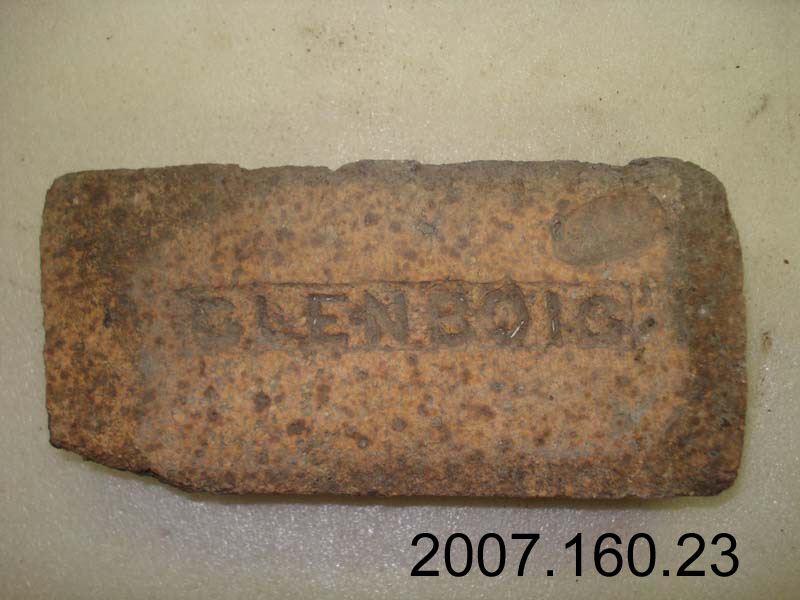
2007_160_23.jpg |
| 2007.160.24 |
Firebrick Gartcosh |
Pink/apricot flecked Gartcoch Scottish rough firebrick with indented frog "Gartcosh". with evidence of soot on side. |
In 1863 the Gartcosh Fireclay Works was established. They produced a variety of ornamental products as well as utilitarian products such as cattle and horse troughs and bricks. They ceased operations in the 1950s when supplies of fireclay were exhausted. Gartcosh brick works was taken over by Glenboig in 1890 |
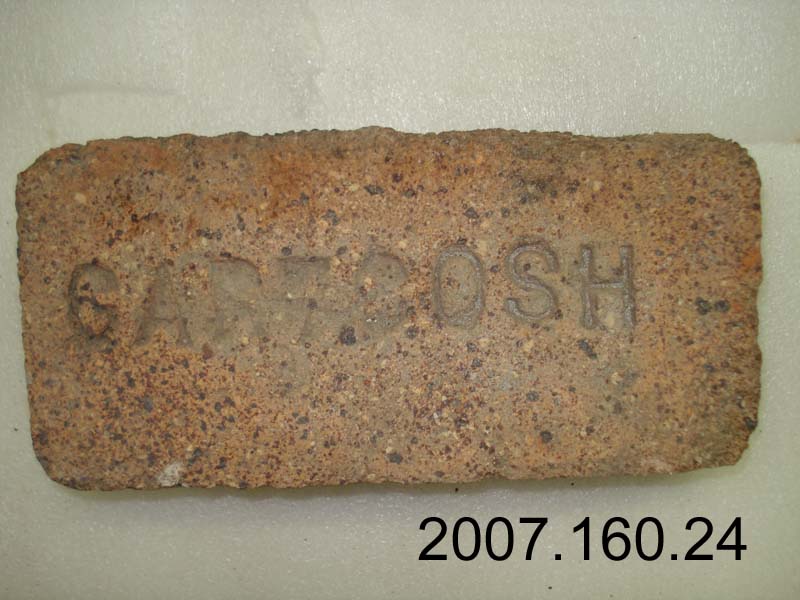
2007_160_24.jpg |
| 2007.160.25 |
Fire brick, G B C |
Red fire brick with "G B C" indented letters in indented rectangular frog. |
Made locally by the Glenmore Brick Co which was formed in 1901. The brickworks were taken over in 1942 by Aldersons of Dunedin, later a subsidiary of McSkimming Industries. The records for McSkimming Industries are held in the Hocken Archives, Dunedin. |

2007_160_25.jpg |
| 2007.160.26 |
Brick, G B C |
Heavy red/orange cut and pressed brick with indented G M makers mark, circa 1880s. |
Made locally by the Glenmore Brick Co which was formed in 1901. The brickworks were taken over in 1942 by Aldersons of Dunedin, later a subsidiary of McSkimming Industries. The records for McSkimming Industries are held in the Hocken Archives, Dunedin. |

2007_160_26.jpg |
| 2007.160.27 |
Brick, George Mintrom |
Red brick with frog "G B C" raised letters in shallow rectangular depression with indented circles from the mould. Machine made circa 1903. |
|

2007_160_27.jpg |
| 2007.160.28 |
Brick, George Mintrom |
Heavy dark red brick with a raised letter G M frog in curved indented rectangle. Made by George Mintrom in a Heathcote kiln. |
Relates to Spye Station homestead owned by George Bayntun Starky (NRAM ref A998) |
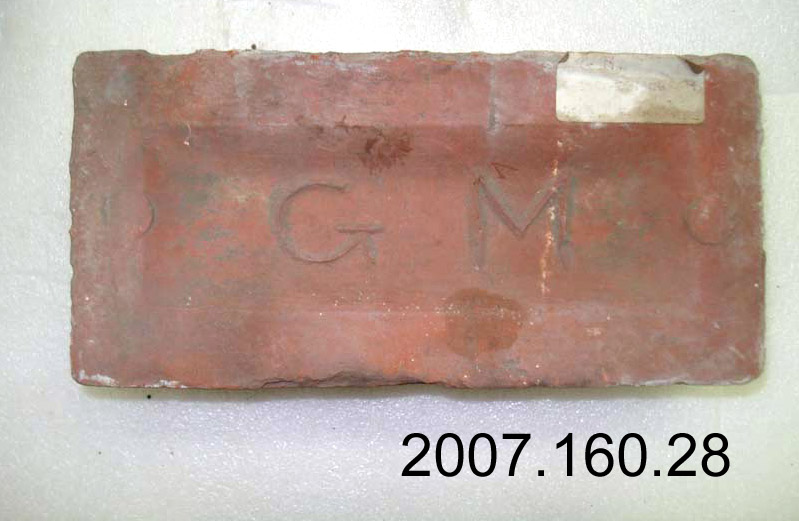
2007_160_28.jpg |
| 2007.160.29 |
Brick, miniature George Mintrom firebrick |
Rectangular yellowish miniature fire brick with indented G M frog in indented rectangle. Made by George Mintrom in a Heathcote, Port Hills kiln. |
|

2007_160_29.jpg |
| 2007.160.30 |
Brick, D L B ? Mark |
Bright orange brick with indistinct shallow rectangular depression frog with indented letters D L B which are also indistinct. |
|
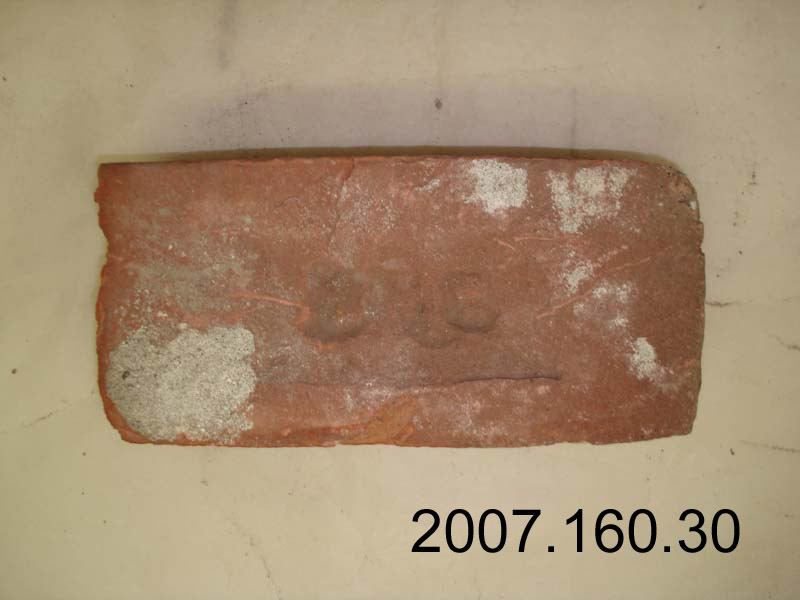
2007_160_30.jpg |

